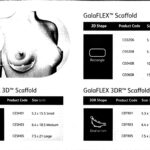Patients with large breasts (a condition medically referred to as macromastia or breast hypertrophy) often experience a range of physical and sometimes psychological symptoms.
The most common symptoms include:
- Chronic Pain
- Neck pain
- Upper and mid-back pain
- Shoulder pain, sometimes with deep grooves from bra straps
- Postural Issues
- Slouched or forward-leaning posture due to the weight
- Muscle fatigue and strain from compensating posture
- Skin Issues
- Rashes or skin irritation under the breasts (intertrigo)
- Fungal infections in skin folds
- Chafing or pressure sores
- Restricted Physical Activity
- Difficulty exercising or engaging in sports
- Limited range of motion in the upper body
- Breathing Difficulties
- Some women report shortness of breath when lying flat, due to pressure from breast tissue on the chest wall
- Numbness or Tingling
- Nerve compression in the shoulders or arms, especially the brachial plexus
- Emotional and Psychological Effects
- Self-consciousness or low self-esteem
- Unwanted attention or harassment
- Clothing fit issues
Management of symptoms related to large breasts typically involves both non-surgical and surgical approaches, depending on the severity and the impact on quality of life. Here’s an overview:
- Non-Surgical Management
These are often first-line strategies, especially for milder symptoms:
Supportive Measures
- Proper bra fitting: A professionally fitted, supportive bra (e.g., full-coverage, wide straps, minimizing bras) can reduce strain on the shoulders and back.
- Posture correction: Physical therapy or ergonomic adjustments (like better desk setup) can help with alignment.
Physical Therapy
- Exercises to strengthen the upper back, shoulders, and core muscles
- Stretching to improve posture and relieve tension
Pain Management
- NSAIDs (e.g., ibuprofen) for inflammation and pain
- Hot/cold therapy for sore muscles
Weight management
- In patients with high BMI, modest weight loss can reduce breast volume and associated symptoms (though this isn’t always effective, especially if breast tissue is glandular, not fatty).
Skin Care
- Antifungal powders or creams for intertrigo
- Barrier creams (e.g., zinc oxide) to prevent chafing
- Surgical Management
When conservative treatments don’t relieve symptoms, breast reduction surgery (reduction mammoplasty) may be recommended.
Breast Reduction Surgery:
- Removes excess fat, glandular tissue, and skin
- Lifts and reshapes the breasts
- Often significantly reduces pain and improves quality of life
Benefits:
- High patient satisfaction
- Long-term relief of pain and mobility issues
- Improved ability to exercise and wear a wider range of clothing
Risks/Considerations:
- Scarring (usually fades over time)
- Potential impact on breastfeeding (depending on technique used)
- Possible changes in nipple sensation
- Psychological Support
- Body image counselling or therapy may help, especially if symptoms have caused emotional distress or social anxiety.
https://www.nhs.uk/conditions/cosmetic-surgery/breast-reduction/
https://www.mayoclinic.org/tests-procedures/breast-reduction-surgery/about/pac-20384840
https://www.plasticsurgery.org/reconstructive-procedures/breast-reduction










